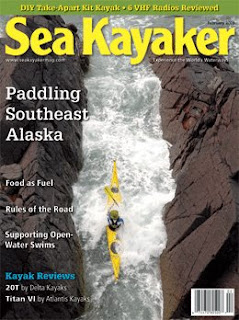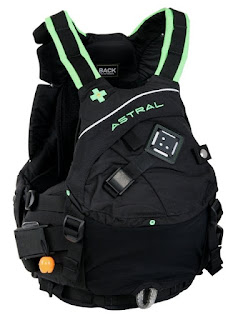Ever Think That Power Boat Might Hit You
I just finished reading an article in Sea Kayaker Magazine ,February 2009, that was nice and informative on the "Rules of the Road" for kayaks. If you paddle on saltwater it is a great article to read through that might clarify some confusion about how to handle areas you kayak with lots of boat traffic. Spending a lot of time on the water in heavily boated waterways, I've seen some pretty crazy travel paths taken by kayakers. Some of which I believe the kayaks felt they had right of way when they did not. As a vessel powered by human power it does seem that we should have right of way all the time. But this is not always the case. So if you are at the store and want to give it a read, pick it up and enjoy.




Comments
What is really interesting other than common sense in Responsibility Rule (#2) noting in the Rules speaks to vessels under oars. The rules do speak of lighting requirements for a vessel under oars - that's it.
Richard
RULE 2
RESPONSIBILITY
(a) Nothing in these Rules shall exonerate any vessel, or the owner, master, or crew thereof, from the consequences of any neglect to comply with these Rules or of the neglect of any precaution which may be required by the ordinary practice of seamen, or by the special circumstances of the case.
(b) In construing and complying with these Rules due regard shall be had to all dangers of navigation and collision and to any special circumstances, including the limitations of the vessels involved, which may make a departure from these Rules necessary to avoid immediate danger.
RULE 25: SAILING VESSELS UNDERWAY AND VESSELS UNDER OARS
(a) A sailing vessel underway shall exhibit:
1. sidelights;
2. a sternlight.
(b) In a sailing vessel of less than 20 meters in length the lights prescribed in paragraph (a) of this Rule may be combined in one lantern carried at or near the top of the mast where it can best be seen.
(c) A sailing vessel underway may, in addition to the lights prescribed in paragraph (a) of this Rule, exhibit at or near the top of the mast, where they can best be seen, two all-round lights in a vertical line, the upper being red and the lower Green, but these lights shall not be exhibited in conjunction with the combined lantern permitted by paragraph (b) of this Rule.
(d)
1. A sailing vessel of less than 7 meters in length shall, if practicable, exhibit the lights prescribed in paragraph (a) or (b) of this Rule, but if she does not, she shall have ready at hand an electric torch or lighted lantern showing a white light which shall be exhibited in sufficient time to prevent collision.
2. A vessel under oars may exhibit the lights prescribed in this rule for sailing vessels, but if she does not, she shall have ready at hand an electric torch or lighted lantern showing a white light which shall be exhibited in sufficient time to prevent collision.
(e) A vessel proceeding under sail when also being propelled by machinery shall exhibit forward where it can best be seen a conical shape, apex downwards. A vessel of less than 12 meters in length is not required to exhibit this shape, but may do so. [Inld]